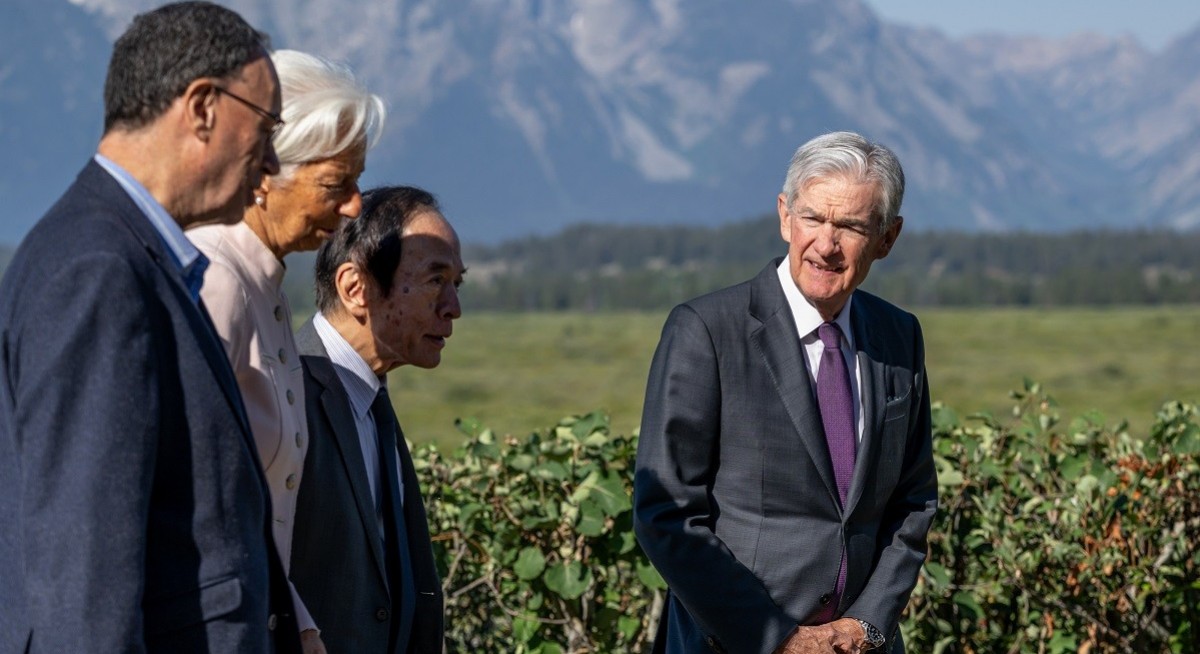Some officials will want multiple cuts, a second group will only commit to one move and still others will object to any cuts at all, said Stephen Stanley, chief US economist at Santander US Capital Markets LLC.
The result, Stanley concluded: “The September message will probably be, ‘One cut and we’ll see what happens.’”
In what was likely Powell’s last speech at the US central bank’s annual gathering in Jackson Hole, Wyoming, the Fed chief pointed to mounting risks to the labour market.
“The shifting balance of risks,” Powell said, “may warrant adjusting our policy stance.”
See also: Economists polled by Bloomberg see two Fed rate cuts in 2026 following December move
That long-awaited signal for an approaching cut came amid unrelenting pressure from the White House for lower borrowing costs. President Donald Trump dismissed Powell’s remarks as “too late,” but financial markets rallied, causing stocks to surge and Treasury yields to drop.
But Powell’s words fell well short of a guarantee. He took care to warn of continued inflation risks, saying tariff effects on consumer prices are “now clearly visible,” and it’s possible “the upward pressure on prices from tariffs could spur a more lasting inflation dynamic.”
“As you think about the fact that there are two-sided risks and that there are very divergent views on the committee, I think the easiest path ahead is for a slow path of rate cuts,” said Matthew Luzzetti, chief US economist for Deutsche Bank. Policymakers could begin that process next month, “with further action being more data-dependent beyond that,” he said.
See also: US treasury market tops US$30 trillion, doubling since 2018
No Commitment
After lowering rates by a full percentage point last fall, policymakers have held them steady this year out of concern that Trump’s tariffs could reignite price pressures. Inflation is still above the Fed’s 2% target.
But as risks to the labour market become more apparent, and with the timeline for tariff-related price changes extending, officials are moving closer to a rate reduction next month that may be framed as a compromise.
Powell did not commit to a specific time frame in his remarks, in which he said the labour market was in a “curious kind of balance” resulting from a marked slowdown in both the supply of and demand for workers. He also made clear that it was far from decided how tariffs will ultimately affect inflation. Still, he signalled that policymakers may need to adjust rates before they have full clarity on that question.
Powell heads into his final months at the helm of the Fed — his term as chair expires in May — facing a delicate challenge. He must generate consensus among policymakers with competing views over the appropriate path for policy. Projections released in June showed the majority of policymakers saw the central bank lowering rates at least two times this year. But a significant minority favoured no cuts at all in 2025.
Fed Divisions
Recent comments from policymakers suggest that divide persists, with some officials open to cutting rates multiple times this year. That includes two Fed governors — Christopher Waller and Michelle Bowman — who dissented over the July decision to stand pat. Each pointed to signs of weakness in hiring, and appeared vindicated by a surprisingly poor July jobs report released two days after the meeting.
White House Council of Economic Advisers Chair Stephen Miran — whom Trump appointed to fill a temporary slot on the Fed’s Board of Governors that expires in January — will bolster that group once he’s confirmed by the Senate, though the timing is uncertain.
Another group has signalled they are not sure the Fed should be lowering borrowing costs at all. With inflation still running above the Fed’s 2% target, they’ve remained wary of the risk that lower rates could fuel price pressures and push up inflation expectations — which they believe can, by itself, push prices and wages higher.
To stay ahead of Singapore and the region’s corporate and economic trends, click here for Latest Section
Cleveland Fed President Beth Hammack said Thursday she would not support lowering rates if officials were meeting this week. Kansas City’s Jeffrey Schmid was even more hawkish, telling Bloomberg’s Odd Lots podcast that he wouldn’t dismiss a scenario in which rates went up.
A third cohort of officials have signalled support for an approach in which the Fed lowers rates once and then pauses before making another move to gauge how the economy responds. “Today, I think my strategic approach would be ‘move and wait,’” Atlanta Fed President Raphael Bostic said last week.
One and Done
But after the dismal July jobs data, some policymakers have signalled they may be running out of time to wait for a clearer picture of how tariffs will ripple across the economy before the labour market is tipped into a downturn.
“If the best of all the options is we make some adjustments and then we have to pause, or even then we have to reverse course, that might be better than just sitting here on hold until we get clarity on tariffs,” Minneapolis Fed President Neel Kashkari said earlier this month.
Powell spoke to the labor-market risks Friday, acknowledging that weakness can rapidly spiral.
“Downside risks to employment are rising,” he said. “If those risks materialise, they can do so quickly in the form of sharply higher and rising unemployment.”
Fed officials will issue new forecasts at their gathering next month. Continued division would lower the odds that a move next month will lead to a steady string of rate reductions.
“Investors should not underestimate the current tension within the dual mandate of price stability and maximum sustainable employment,” Joe Brusuelas, chief economist at RSM US LLP, wrote in a note to clients.
To Brusuelas, a modest reacceleration in hiring, especially if coupled with a continued move upward in inflation, would point to a “one-and-done scenario.”




